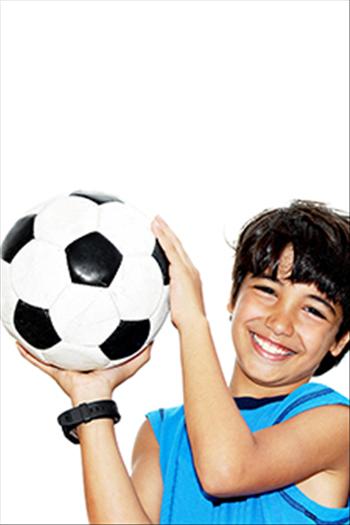Grand final
Duration/age

Football and sporting finals are a very important event for many families as they are a celebration of the hard work and achievement of the team over the past year. You may have a member of the family playing in the team or your favourite football team may be playing.
Your favourite team may be a local team who you can watch at the local oval or they may be an AFL team and you will watch the game on the TV. When talking about the grand final begin by talking about what day and time of the week it will be played. If you are not sure you can look it up in the TV guide or on your TV’s menu planner.
Who are the opposition and what does their uniform look like? Who will win and will it be a close game that is low scoring or will one team ‘kill’ the other? Will it be a windy day and will this affect the way the full forward kicks for goals?
How many goals will your team kick?
Materials you will need
- TV
- Newspaper
Skills this activity improves
Why does this matter?
Talking about the grand final and what may happen helps children to begin to think mathematically and make predictions about what the outcome of an event may be. It helps children to understand that there are predictable routines but within the routine the outcome may change depending on different attributes, such as the weather. Talking about the score helps children to understand that number is about measurement and how big something is. When we begin to describe the uniforms of our favourite team or the opposition we have started to sort and categorise by colour, shape and direction.
What does this lead to?
When we can predict that something will reoccur or it is repeated with similar attributes then we begin to understand about patterns. Talking about how many goals were kicked or how close the score was is a form of measurement and helps us to describe events by size. Kicking for goal is an activity that supports children to understand about distance, space and angle. This will help children to understand geometry.
Language to use
- Too far, too close, near enough
- Middle, edge, boundary, centre, forward, back
- Stop, start
- Quarter time, half time, three quarter time, full time
- 1, 2, 3, 4
- Goal, point, score
Questions to use
- Who will win and by how much?
- Will it be a close game?
- How many goals will ______ kick?
- Who will be in front at half time?
Useful tips
Remember to talk to your child in your home language.
More ideas
Bingo card to record goals for each player.
Variation by age
Three to five year olds
- Set up a football game outside and keep a record of how many goals were scored.
- Mark on the ground different points closer and further away from the goals. 'Are you still able to kick a goal at each distance?'
- Set up different sized and shaped containers and see if you can throw a ball into each one.
- Make a bingo card with the players’ numbers on it. Each time they score a goal place a dot on the number. 'Who had the most goals and who had none?'
- Look at the different height of the players in the team. Make a graph of the heights of the players, moving from the shortest player to the tallest player.
- Design your own football uniform.
Language to use
- What is your highest score?
- How far can you move away and still score?
- Which player scored more goals?
- Can you kick the same number?
- What design and pattern will be on the front of the uniform?
- Will the back be the same or different?


